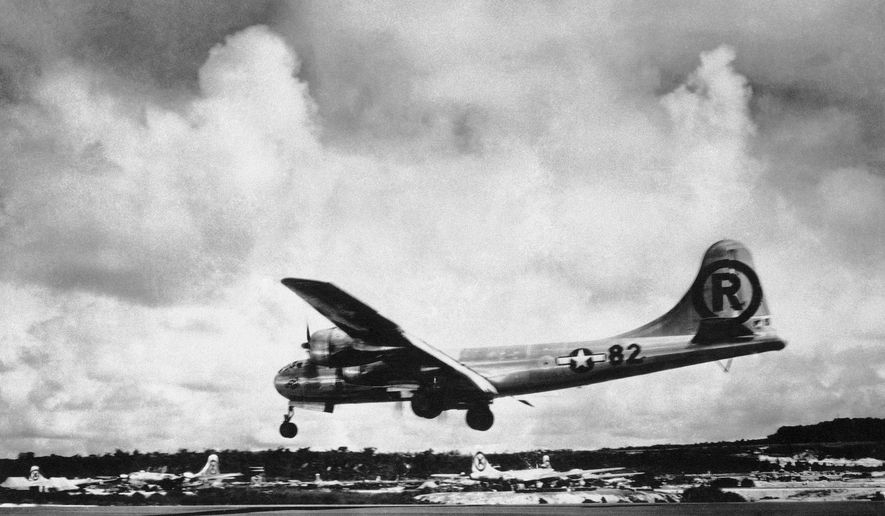WARNER ROBINS, Ga. (AP) - Museum of Aviation visitors can now get a close-up view of what crew members of the Enola Gay were looking at when they changed history.
The Enola Gay was a B-29 Superfortress that dropped an atomic bomb on Hiroshima, Japan.
The museum has long had a B-29 cockpit separate from the full B-29 that sits in the Scott Hangar. The cockpit is at floor level below the giant bomber, and with its panoramic windows, visitors can get a full view of the inside, including the switch the Enola Gay bombardier would have flipped to drop the bomb.
It actually sits next to a higher elevation of the floor, where visitors can get an even better look.
The cockpit has been at the museum for years, but it was largely stripped. Six months ago, museum volunteer Bob Denison began restoring it and is nearing completion. He has mostly done the work himself because there isn’t much room for more than one person to work inside the cockpit.
Mr. Denison has successfully finished other restoration projects at the museum, including the cockpit of the plane in the Tuskegee Airmen exhibit. He also was a crew chief on the last active B-29 squadron in 1959.
The crew chief is responsible for keeping the plane flying and knows the plane inside and out. It has all come back to him fairly easily, he said.
“It’s like riding a bicycle,” he said as showed off some of his work. “It was a good airplane. The engines were junk, but the airplane itself was good.”
He was traveling the country in an RV when he began stopping at the museum a few years ago on his way to and from Florida. Then his visits got longer as he started helping out at the museum.
When he heard that the museum was trying to get a B-17, he decided to buy a house in Bonaire so he could work on the project. The museum is hopeful that longtime dream is close to becoming reality, and Mr. Denison will be the lead volunteer on the B-17 restoration. When asked why he is so interested in the work, he said simply, “I love the airplanes.”
The B-17 is considered the predecessor of the B-29.
Mike Rowland, the museum’s curator, said Mr. Denison is a big asset and the B-29 cockpit project is an important addition. Mr. Denison usually works a full 40-hour week.
“We couldn’t do what we do without volunteers, and Bob has been tremendous,” Mr. Rowland said.
The full B-29 at the museum is on pedestals with its bomb bay doors open and a restored shell of a nuclear bomb underneath. With the cockpit, it gives one of the best full views of a large plane at the museum.
Mr. Denison said there was no special configuration of the Enola Gay cockpit, so the one at the museum is almost identical. He has scoured the country for the parts to recreate it, but the museum already had one of the most important ones, which is the Norden bombsight. The bombsight was a top secret device in World War II.
The B-29 came into service toward the end of World War II and also was used in the Korean War. It was the first bomber to have a pressurized cockpit, which meant crew members did not have to wear oxygen masks. Even before the atomic bombs were dropped, the B-29 was used extensively to bomb Japan.




Please read our comment policy before commenting.